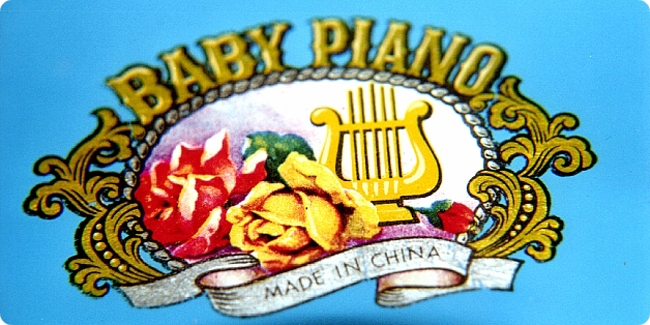the joy of toy :: FAQ
Here you can find answers to some frequently asked questions about Isabel's project THE JOY OF TOY:
Q: What exactly is a toy piano?
A: A toy piano is a musical instrument which looks like a miniature grand or upright piano, originally built as a child's toy.
Q: Apart from their size, what are the main differences between a piano and a toy piano?
A: A toy piano doesn't have strings like a piano but metal rods. When played, these metal rods are hit by wooden or plastic mallets. The tuning of a toy piano is not well-tempered but slightly microtonal, which comes with the difficulty of cutting the rods to the appropriate lengths. A toy piano doesn't have pedals or dampers, so a player can't really influence the duration of a sound.
Q: Who invented the toy piano?
A: As far as we know the invention of the toy piano goes back to Albert Schoenhut, a German immigrant in Philadelphia, USA, who founded his company in 1872. Toy collectors seem to know that company especially for it's other very successful invention, the 'Humpty Dumpty Circus'.
Q: Is the toy piano really a toy?
A: Yes, originally it was really meant as a toy. In fact in the early 20th century it must have been a very popular toy. At the Nuremberg Toy Museum I was shown catalogues of the German Toy Industry from the 20ies where you can find three pages with a variety of toy pianos offers. The toy pianos of that time still had steal bars like a xylophone which were hit by wooden hammers (only later on thin metal rods replaced the steel bars.) In the catalogues I saw one could choose from 20 different toy pianos, and all of them were available in many different sizes. Some models you could purchase in nine different sizes, ranging from five to 24 keys. In another catalogue by a toy whole sale company based in Germany and London, around 1910, I saw toy pianos ranging from four to 51 (!) keys. The wooden corpuses of these instruments were often beautifully painted.
Q: Who had the idea to use the toy piano as a concert instrument?
A: The idea to use the toy piano as a concert instrument goes back to the great American composer John Cage, who wrote his 'Suite for Toy Piano' back in 1948. This piece of music is in five movements and uses only nine white (diatonic) notes. It was written for a Merce Cunningham dance entitled 'Diversion'. The first performance was at the legendary Black Mountain College (North Carolina) in August 1948, rendered by the composer himself. The concert premiere of the piece was at the New York Living Theatre in 1960.
Q: Why do you perform concerts on toy pianos?
A: First of all I just enJOY doing it. When I started my project THE JOY OF TOY I had no idea how it would develop. Ever since then I have realised that the restriction the toy pianos bring with them seems to inspire composers to write very unique music. The resulting works are very diverse and varied. With every new piece a new world opens up to me. And the theatrical element inherent is very appealing to me. It also turned out that the toy piano has a potential to arouse the curiosity of broad audiences, and makes them listen very carefully and enjoy new music in a relaxed way.
This collection of Questions and Answers will be continued. Look out for new entries.
send an email to Isabel if you wish to pose a question
